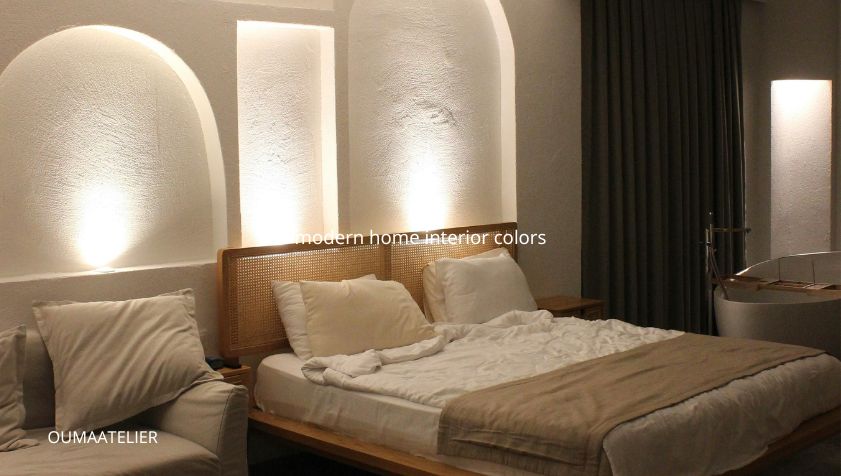Introduction
If you’re searching for ways to make your living space feel cozy, artistic, and full of warmth, then Thomas Kinkade home interior pictures are a perfect choice. These famous artworks—known for their soft light, peaceful cottages, and nostalgic charm—can transform any room into a calm and beautiful retreat. Whether you have a modern apartment, a rustic country home, or a simple living space, Thomas Kinkade home interior pictures can easily blend in and create a sense of comfort.
In this article, we’ll explore what makes Thomas Kinkade home interior pictures so special, how to choose the right painting for your room, where to hang them, and how to match them with furniture, lighting, and color themes. You don’t need to be a professional designer—just a bit of creativity and inspiration from Kinkade’s world of glowing cottages and dreamlike landscapes will help you turn your home into an artful, welcoming space.
Who Is Thomas Kinkade?
Thomas Kinkade (1958–2012) was an American artist famous for his luminous paintings of cottages, gardens, and peaceful village scenes. Known as The Painter of Light™, he captured the beauty of everyday life through warm colors, glowing windows, and gentle light. His work evokes feelings of peace, nostalgia, and faith—qualities that make his art perfect for home interiors.
Kinkade’s paintings became popular worldwide through prints, canvas reproductions, calendars, and even puzzles. His images often feature charming cottages surrounded by flowers, soft streams, and golden sunlight. Each piece tells a small story and makes you feel like you could walk right into the scene.
When you use his artwork as part of your home interior, you bring that same glow and storytelling quality into your living space.
Why Choose Thomas Kinkade Home Interior Pictures?
There are many reasons people love decorating their homes with Thomas Kinkade prints:
- Emotional warmth: His artwork gives rooms a comforting and peaceful feeling. The glowing lights in cottages and streets make spaces feel inviting.
- Timeless appeal: Unlike trendy designs that fade quickly, Kinkade’s art is classic and suits any era or decor style.
- Versatility: His pictures can fit in living rooms, bedrooms, hallways, or even offices.
- Color harmony: The balance of warm and cool tones makes them easy to pair with most wall colors and furniture.
- Positive storytelling: Every Kinkade scene represents tranquility, family, and home—values that make a house feel more personal.
With these advantages, it’s no surprise that Thomas Kinkade’s art remains a favorite choice for homeowners who want beauty with meaning.
Choosing the Right Picture
Selecting the best Thomas Kinkade artwork for your space depends on your personal taste, room size, and color scheme. Here are some helpful tips:
1. Size Matters
- For large living rooms, go with a bigger canvas (30×24 inches or more). It will act as a statement piece above your sofa or fireplace.
- For bedrooms or hallways, smaller prints work better—they create charm without overwhelming the room.
- Keep proportion in mind: your artwork should fill about 60%–70% of the wall space above your furniture.
2. Theme Selection
Thomas Kinkade painted many themes—from peaceful cottages and seaside landscapes to city streets and chapels. Choose a theme that fits your personality and room purpose:
- Cottages and gardens: Great for living rooms or family spaces.
- Lighthouses and ocean scenes: Perfect for bathrooms, hallways, or coastal homes.
- Cityscapes: Ideal for modern apartments or workspaces.
- Spiritual or chapel paintings: Beautiful for bedrooms or meditation areas.
3. Color Harmony
Look at the main tones in your furniture, wall paint, and decor. Match or complement them with the painting.
- If your room has neutral colors (beige, cream, grey), a warm glowing Kinkade scene adds life.
- If you have bold accents (navy blue, forest green, burgundy), pick a painting that includes those shades subtly.
4. Frame Style
The right frame enhances the painting:
- Wooden or gold frames: Traditional and elegant.
- Simple black frames: Best for modern or minimalist interiors.
- White frames: Great for light, coastal, or Scandinavian themes.
Where to Place Your Thomas Kinkade Pictures
Placement can make or break your interior look. Here’s how to choose the best spot for your Thomas Kinkade home interior pictures:
Living Room
- Hang one large centerpiece above the sofa or fireplace.
- Use two or three smaller prints to create a gallery wall.
- Make sure there’s enough light nearby so the picture’s glow stands out.
Bedroom
- A small or medium-sized Kinkade painting above the headboard adds comfort and calmness.
- Choose soft, serene scenes like cottages or sunset landscapes for a relaxing vibe.
Dining Room
- Place artwork on a main wall where it can be seen from the table.
- Select cheerful village or garden scenes to promote a warm family atmosphere.
Hallway or Entryway
- Use vertical prints to make narrow spaces feel taller.
- Bright, light-filled pieces make your home feel welcoming right at the entrance.
Office or Study
- A peaceful landscape or chapel print can create focus and inspiration.
- Avoid overly busy images; opt for balanced, calm compositions.
Lighting and Ambience
Light is key to enjoying Thomas Kinkade art since his signature style centers on glowing illumination.
- Use warm light bulbs (2700–3000K) to mimic the soft glow in his paintings.
- Avoid direct sunlight on the artwork to prevent fading.
- For framed prints, use non-glare glass.
- Picture lights above or below the frame highlight details beautifully.
Kinkade’s paintings look their best under gentle, warm light. This enhances the feeling that the picture itself glows—a magical effect his fans adore.
Decorating Styles That Fit Kinkade Art
1. Cottage or Country Style
- Natural wood furniture, floral fabrics, and warm colors.
- Pair a “cottage by the stream” painting with cozy textiles and woven rugs.
2. Traditional or Classic Homes
- Deep wood tones, rich upholstery, and detailed frames.
- Kinkade’s “Victorian street” or “Garden gate” scenes blend seamlessly.
3. Modern or Transitional Interiors
- Simple furniture with clean lines.
- Choose larger Kinkade prints with neutral or blue-toned palettes.
- Avoid ornate frames—keep it sleek.
4. Coastal or Beach-Inspired Rooms
- White walls, blue accents, and nautical decor.
- Use lighthouse or seaside prints to complete the look.
How to Create a Gallery Wall
If you have multiple Thomas Kinkade home interior pictures, consider making a gallery wall. Here’s how:
- Choose a consistent theme (e.g., “cottage evenings” or “coastal sunsets”).
- Use frames of similar color or design for unity.
- Lay them out on the floor first before hanging.
- Leave equal spacing between pictures (about 2–3 inches).
- Balance large and small prints for visual harmony.
This approach adds character and gives guests something fascinating to admire.
Caring for Your Artwork
To keep your Thomas Kinkade art looking beautiful for years:
- Avoid placing prints in direct sunlight or damp areas.
- Dust frames regularly with a soft, dry cloth.
- If framed under glass, use a gentle cleaner sprayed on the cloth (never directly on glass).
- Keep humidity levels moderate to protect paper and canvas.
- Hang with sturdy wall anchors to prevent accidental falls.
With simple care, your Kinkade picture will remain radiant and timeless.
Budget and Availability
One of the great things about Thomas Kinkade’s legacy is the wide range of products:
- High-end limited editions: Hand-highlighted canvas prints signed by the artist or studio.
- Affordable reproductions: Posters, small framed prints, and calendars.
- Digital and online art stores: Many authorized retailers like thomaskinkade.com or art galleries sell official pieces.
Even if you’re on a budget, you can find smaller prints or reprints that capture the same charm and quality.
Emotional Impact of Kinkade’s Art
Beyond beauty, Kinkade’s art connects emotionally. His paintings often feature glowing windows, peaceful paths, or churches surrounded by light—symbols of hope, family, and comfort. When displayed in a home, these images do more than decorate; they inspire feelings of calmness, gratitude, and nostalgia.
Psychologically, warm lighting and soft landscapes can reduce stress and create relaxation. This is why many people use Kinkade prints in spaces meant for unwinding, reading, or meditation.
Common Decorating Mistakes to Avoid
- Hanging art too high or too low: Always keep the center of the artwork at eye level.
- Using too many small prints together: It can feel cluttered. Instead, balance big and small.
- Ignoring lighting: A dimly lit Kinkade painting loses its magic glow.
- Mismatch of frames and decor: Keep your frame style consistent with your furniture.
- Overcrowding: Let the artwork breathe—don’t place too many decorations around it.
Avoiding these mistakes ensures your home looks balanced and professionally styled.
Final Thoughts
Decorating your home with Thomas Kinkade home interior pictures is more than just hanging paintings—it’s about creating warmth, peace, and storytelling in your living space. His art turns walls into windows of light and imagination, adding timeless beauty to any room.
Whether you live in a small apartment or a large country home, a single Kinkade print can make your space feel alive with emotion and charm. Choose the scenes that speak to your heart—be it a glowing cottage by a stream, a peaceful lighthouse, or a vibrant city street—and let that light reflect into your home.
With thoughtful placement, soft lighting, and matching decor, your walls will no longer be blank—they’ll tell stories, spark memories, and make your home truly yours.

